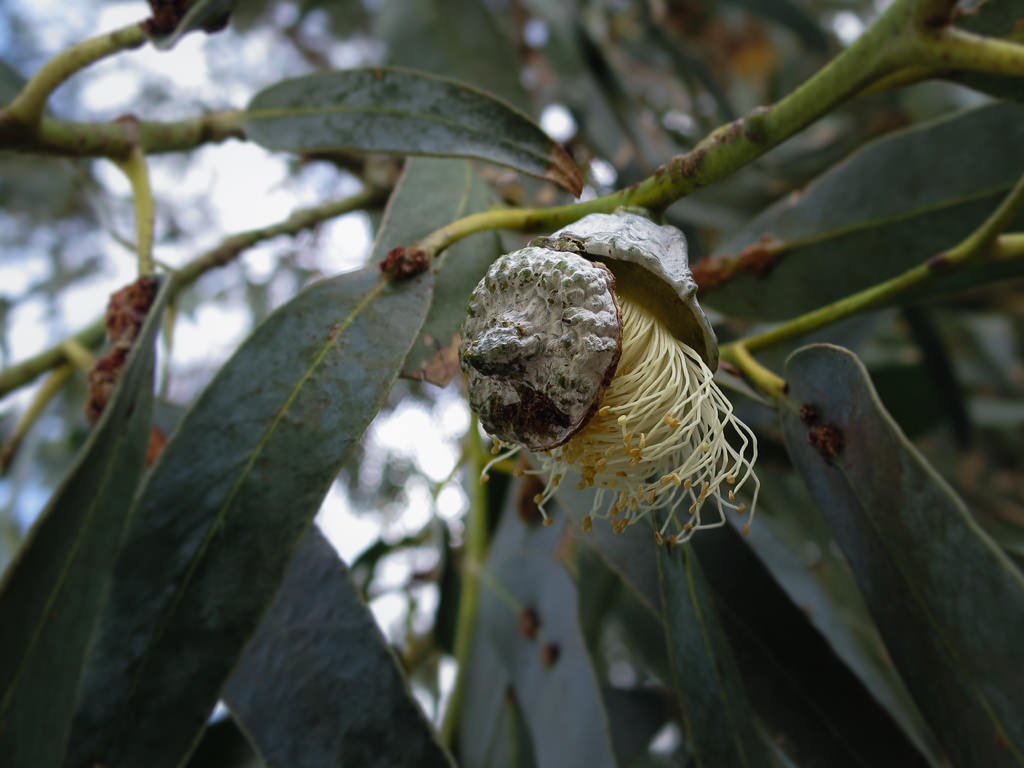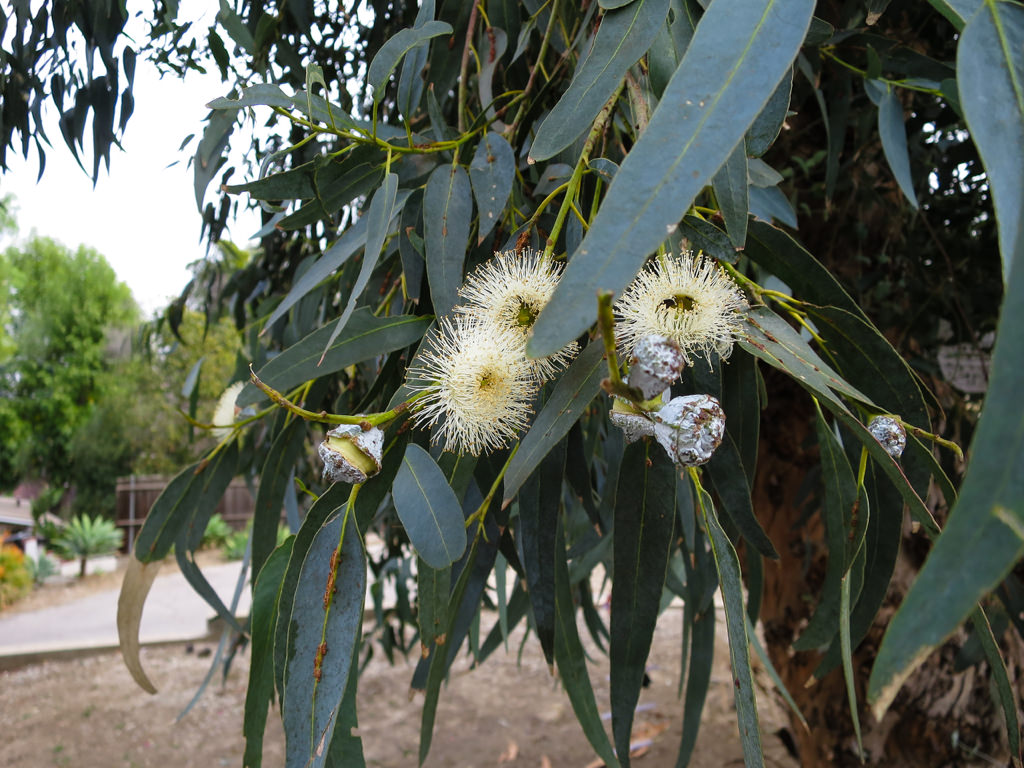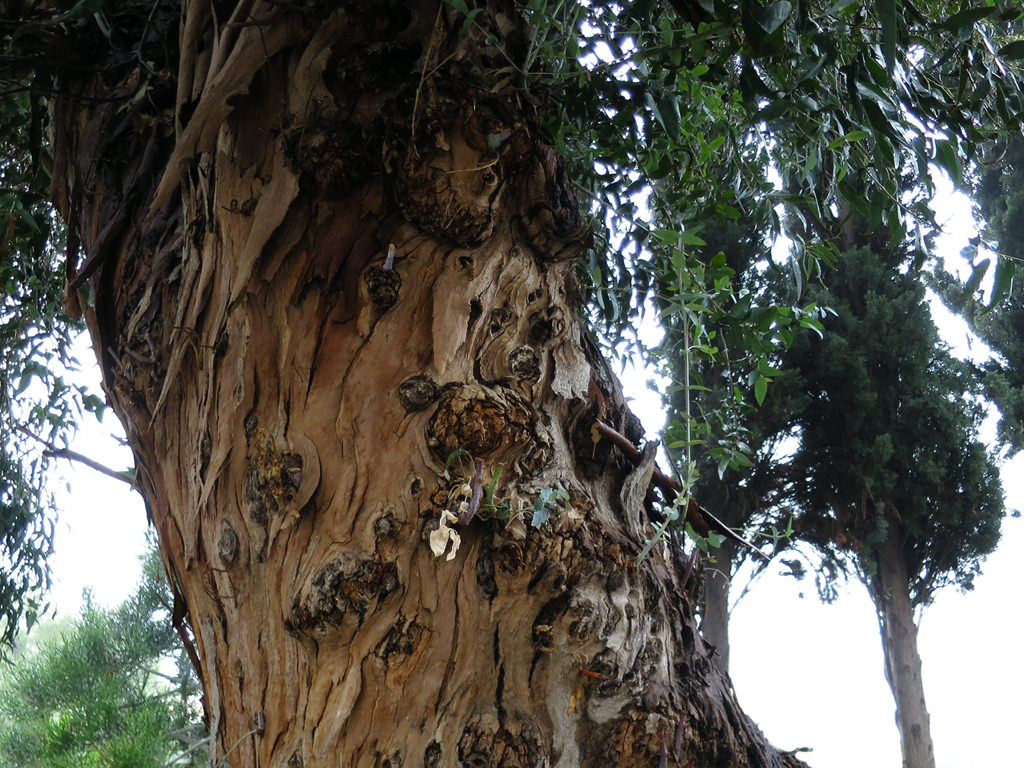Eucalyptus globulus
(Eucalyptus globulus subsp. globulus)
Tasmanian Blue Gum, Bluegum Eucalyptus

Eucalypti include over 900 species and are largely endemic to the vast and climatically diverse Australia and the islands of Tasmania, where they dominate above other trees. Bluegum Eucalyptus was introduced into California in 1856, where this evergreen tree flowers from November to April.
Both trees and shrubs are sun-loving and well-equipped to survive hot and dry conditions thanks to lignin, which also makes Eucalyptus leaves hard and leathery. The leaves are a source of the well-known Eucalyptol oil, which has antioxidant and anti-bacterial properties. Australia’s indigenous people revere the plant. Eucalyptol oil has been a sacred substance used in spirit-purifying ceremonies for centuries. Aborigines apply diluted oil as disinfectant on wounds, as a pain-relief rub onto skin, and to treat fevers. Tree bark serves to build canoes, while hardwood is valuable to carve spears, shields, and boomerangs.
Eucalypti are fast-growing, with some species achieving a growth rate of even 52 feet (15.85 meters) in four years, making them a quick screen. Notably, Bluegum Eucalyptus is one of the world's most valuable windbreak trees because of its wind firmness. Furthermore, the plant’s mighty root system makes Eucalyptus a good choice for slopes to stabilize soil.
Because of their attractive looks, Eucalypti are used as an accent plant to flaunt their beauty. Many species grow to be imposing trees with charming fragrant foliage, which is especially known for its beguiling shimmer in moonlight. It is said that those who find respite under eucalyptus rise to leave all heavy thoughts behind.
Quick facts
Height: 50 to 180 feet
Width: variable
Leaves: evergreen
Soil: loam, well-drained
pH: acid, neutral
Exposure: full to partial sun
Water: low, average
Tolerance: drought tolerant
Toxicity: toxic leaves if ingested to humans, cats, dogs, and horses
Wildlife: attracts bees and birds




References
Hill Hassall Botanics. (n.d.). The ancient power of eucalyptus. https://hillhassall.co.uk/ancient-power-of-eucalytpus
Phan, R. (2023, May 05). Eucalyptus: Everything You Need to Know. Verywell Health. https://www.verywellhealth.com/eucalyptus-uses-benefits-side-effects-dosage-7483449
Plants Database. (n.d.). Tasmanian Blue Gum (Eucalyptus globulus subsp. globulus). https://garden.org/plants/view/221119/Tasmanian-Blue-Gum-Eucalyptus-globulus-subsp-globulus/
Pletcher, P. (2023, May 5). 9 Unexpected Benefits of Eucalyptus Oil. Healthline. https://www.healthline.com/health/9-ways-eucalyptus-oil-can-help
School of Biosciences, University of Melbourne. (n.d.). The story of our eucalypts, reviewed by Professor Pauline Ladiges AO FAA. https://www.science.org.au/curious/earth-environment/story-our-eucalypts
Skolmen, R. G., & Ledig, F. T. (n.d.). Eucalyptus Globulus Labill. Bluegum Eucalyptus. https://www.srs.fs.usda.gov/pubs/misc/ag_654/volume_2/eucalyptus/globulus.htm
Spengler, T. (2022, December 28). Eucalyptus Tree Types: Popular Varieties Of Eucalyptus For Landscapes. Gardening Know How. https://www.gardeningknowhow.com/ornamental/trees/eucalyptus/eucalyptus-tree-types.htm
Trees and Shrubs Online. (n.d.). Eucalyptus. https://treesandshrubsonline.org/articles/eucalyptus/